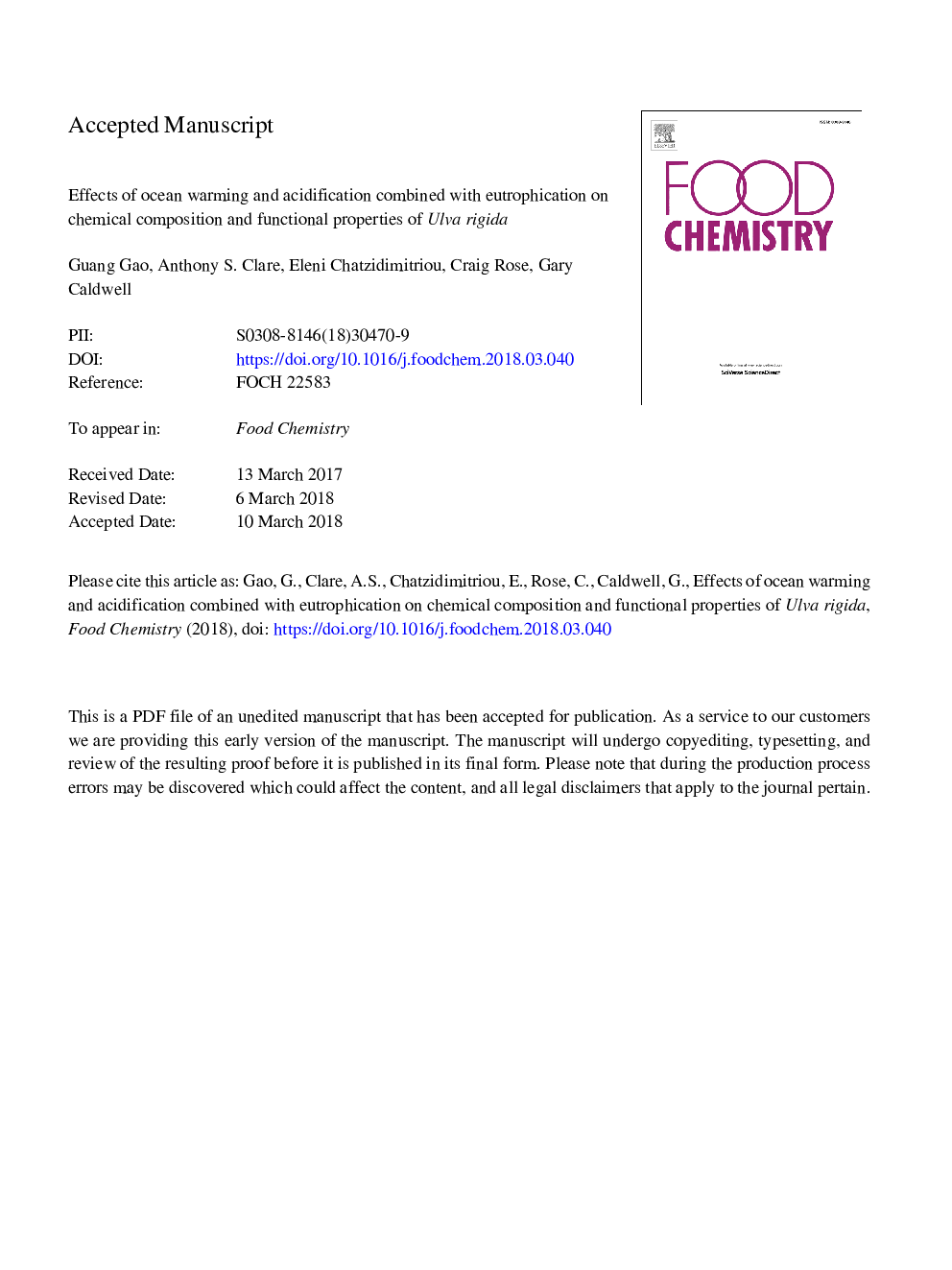| Article ID | Journal | Published Year | Pages | File Type |
|---|---|---|---|---|
| 7585118 | Food Chemistry | 2018 | 42 Pages |
Abstract
Ulva is increasingly viewed as a food source in the world. Here, Ulva rigida was cultured at two levels of temperature (14, 18â¯Â°C), pH (7.95, 7.55, corresponding to low and high pCO2), and nitrate conditions (6â¯Î¼molâ¯Lâ1, 150â¯Î¼molâ¯Lâ1), to investigate the effects of ocean warming, acidification, and eutrophication on food quality of Ulva species. High temperature increased the content of each amino acid. High nitrate increased the content of all amino acids except aspartic acid and cysteine. High temperature, pCO2, and nitrate also increased the content of most fatty acids. The combination of high temperature, pCO2, and nitrate increased the swelling capacity, water holding capacity, and oil holding capacity by 15.60%, 7.88%, and 16.32% respectively, compared to the control. It seems that the future ocean environment would enhance the production of amino acid and fatty acid as well as the functional properties of Ulva species.
Keywords
Related Topics
Physical Sciences and Engineering
Chemistry
Analytical Chemistry
Authors
Guang Gao, Anthony S. Clare, Eleni Chatzidimitriou, Craig Rose, Gary Caldwell,
